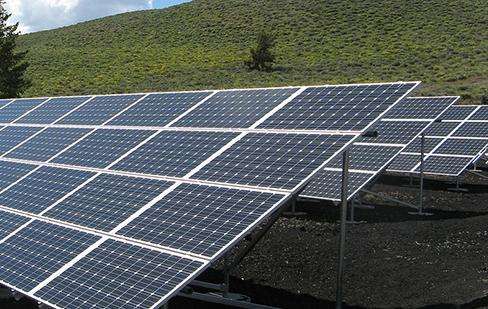1. The blue waves are vast, and the wind moves with me.
2. The clouds are light and the wind is not light, but the wind can fly all over the world.
3. Silver Wind, let us experience the feeling of winning the wind together. An 80,000-kilowatt domestic wind turbine demonstration wind farm project constructed in 2000 under the National Key Technical Transformation Project Plan (the fourth batch of national debt special fund projects).
Why did the wind power stop?
1. Wind is a natural energy source that can promote the exchange of dry, cold and warm and moist air. A long time ago, humans learned to make windmills and use wind power to blow them to pump water and process food. Now people also use windmills to generate electricity.
2. Wind can mix and balance a wide range of heat and water vapor, adjust the temperature and humidity of the air; it can send clouds and rain to distant places, completing the water cycle on the earth.
3. Wind plays an important role in improving farmland environment in agriculture. We know that air flows to form wind, which transports and exchanges carbon dioxide, oxygen, heat, etc. in the air. Create conditions for the growth of crops.
4. Wind can spread plant pollen and seeds, helping plants to pollinate and reproduce.
5. However, wind often brings disasters to humans. Storms, typhoons, and hurricanes can flood farmland, collapse houses, and interrupt water and electricity. Tornadoes can destroy large areas of buildings, leaving a mess in their wake.
6. Moreover, the wind will also bring up sand and dust, forming sandstorms, which is harmful to the human body. It will also drive the desert to move and form deserts.
1. Because wind energy does far more harm to the environment than economic benefits and is not environmentally friendly, it was stopped. The dangers are: 2. Wind power generation will harm the local ecological environment, destroy vegetation, change the terrain, and cause soil erosion and desertification. 3. The electromagnetic radiation produced by wind power affects human habitation. In wind power systems, generators, substations and transmission lines are the main sources of electromagnetic radiation. Additional receivers in wind power plants, when receiving signals, will pick up electromagnetic wave signals reflected by the wind turbine blades. The reflected signal is a lagging signal that has a great impact on AM radio systems. 4. Wind power affects the local climate. Wind power is the use of wind energy in the atmosphere. According to the law of conservation of energy, the consumption and production of one type of heat will inevitably produce or consume another type of energy. Therefore, the power generation process of wind turbines will inevitably consume part of the wind energy in the atmosphere. As one of the important factors of climate change, wind energy will inevitably Will bring about climate change. 5. Wind energy blades are prone to safety accidents. When the wind turbine blades of a wind turbine are subjected to strong winds of more than 25m/s, the bending moment, torque, shear strength and extrusion strength that the blade roots can withstand are limited. In severe cases, the entire blade will fly out and cause personnel damage. Casualties and damage to buildings on roads. 6. Noise hazards from wind power generation. For such a large-scale fan, the noise is inevitable when the blades rotate with huge party fees. The noise of the fan blades can be roughly divided into three categories: thickness noise, which is caused by the compression of air and blades. windyWeather, with doors and windows closed, do you often hear sharp and harsh sounds, which feel like howling ghosts and wolves, coupled with the gloomy sky outside, it is a bit scary to think about it; load noise, as the name suggests, is caused by the blades bearing a large load; pulse Noise, that is, when the Mach number is close to 1. In this way, the impact of noise on the environment cannot be ignored.














